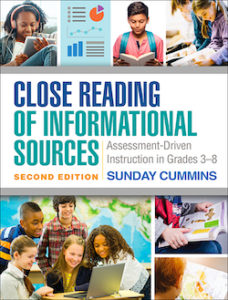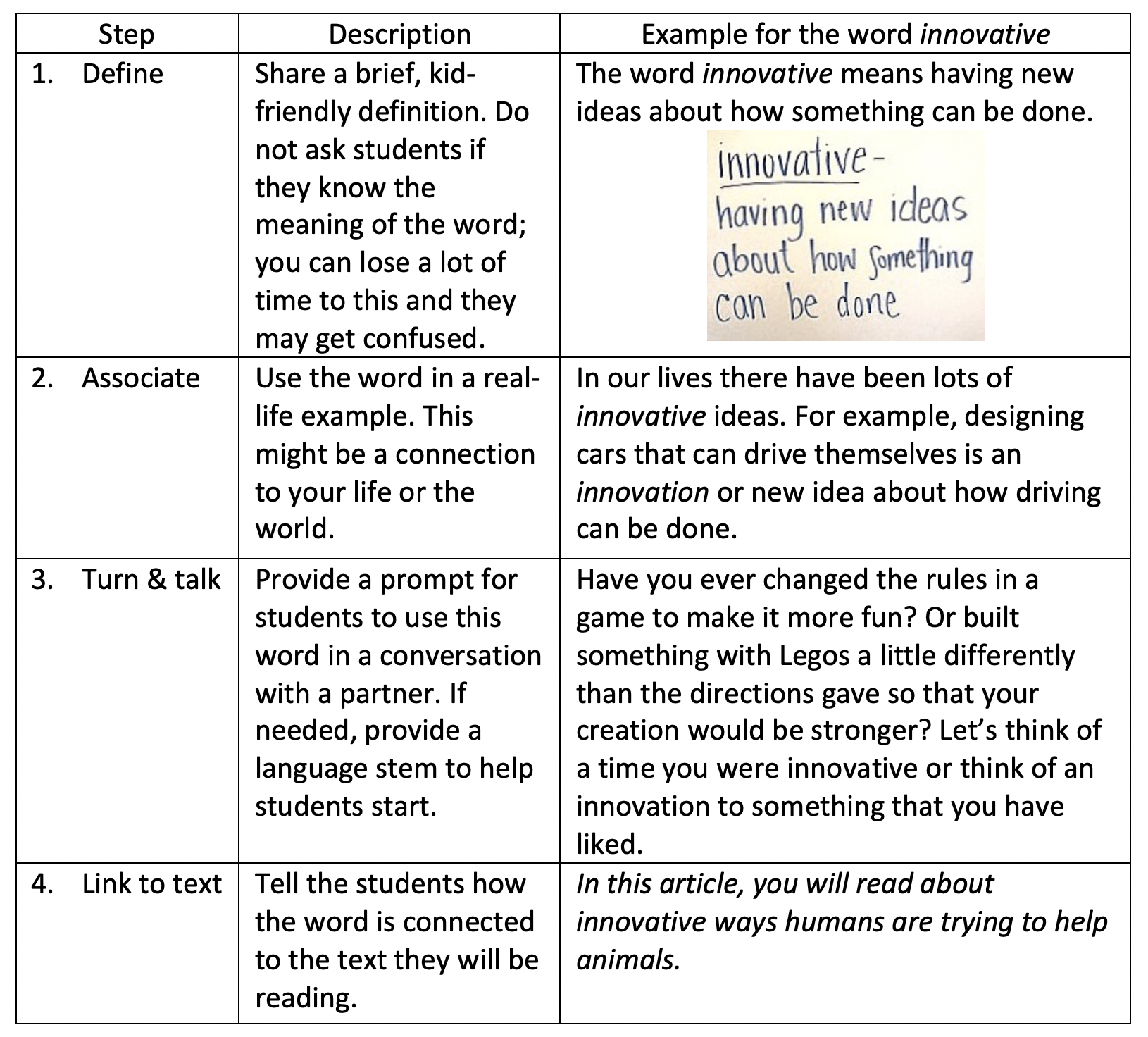4 Vocab Steps Help Kids Grasp Information Text
By Britany Harris and Sunday Cummins
Innovative. Endurance. Partnership. Critical. Perseverance. Knowing vocabulary words like these opens doorways for our students to making sense of complex informational sources.
Knowing the meaning of a word can help a student when they encounter the word in a text and can also help a student when they are attempting to explain what they learned from a text.

Sunday Cummins
For example, in a NEWSELA article entitled “Wildlife Crossings, From Bridges to Tunnels to Overpasses” (National Geographic Society, 2019) it is helpful if a student understands the meaning of the word crossing, which is in the text multiple times as a verb and as a noun. Knowing vocabulary like the word innovative (which is NOT in this article) also helps the student in thinking critically about some of the author’s main ideas.
The key, instructionally, is introducing words like these in a way that students can grasp their meanings and begin to master their use while they’re reading, writing, and talking.
What follows are suggestions for introducing words before reading a text and for sustaining the focus on these words as students engage in reading, talking and writing about informational sources.
Introduce new words with four steps
Based on the work of Beck, McKeown, and Kucan (2013), there are four quick steps that can be used to introduce unfamiliar vocabulary in a meaningful way as described in the chart here. The examples provided are for a lesson introducing the word innovative prior to students reading the previously cited article “Wildlife Crossings.”
Choose a few words for focused instruction
We can’t cover all of the unfamiliar vocabulary in texts and, frankly, students will not remember them all if we try. Choose some key words to define quickly during the preview and predict. Then choose a few to FOCUS on, using the four steps described earlier.

Plan ahead for the introduction of focus words
Locate a kid-friendly definition for each word and write it in large print for all students to view. Being able to see the definition not only will help the students learn the word, but also serves as a helpful reference when students are trying to explain their learning. The definition of the word innovative can help students explain why they think something is innovative – because “it’s a new idea about how something can be done.”
When you ask students to use the word in a sentence (during step 3), you may need to give them a context. It may be too hard for some students to just turn and use a word like innovative in a sentence. Make it easier by giving them a context like “changing the rules in a game to make it more fun.”
Plan a sentence stem you can offer if students need support putting their thoughts into words. For the word innovative, a stem could be “I was innovative when_____.”
Integrate these words into multiple contexts
For students to truly become comfortable with these words, it’s important to give them multiple opportunities to use the words through both written and oral expression.
If you taught a lesson with the text “Wildlife Crossings,” you could ask students, “How are planners being innovative when designing road improvements that include wildlife crossings?” It might be helpful to provide students with a sentence stem to support their oral language, for example, “Planners are innovative by ____.”
As students discuss in pairs, encourage them to look back at the text as well as the written definition for the focused vocabulary that was provided in Step 1.
Then, to provide another opportunity for students to practice using the vocabulary, ask them to write in response to their reading by answering the question, “Why is it important for planners to be innovative about wildlife crossings?” Provide students an opportunity to orally rehearse with a peer to plan what they are going to write, before writing their response. Again, we want students to support their thinking by referring back to the text as well as the definitions of the focus words.
Instructionally, we also need to plan opportunities for students to use these focus words beyond the one text. One way to do this is by finding another text that has a similar main idea. For example, the next text could be about how marine biologists are finding innovative ways to clean the ocean.
Another strategy is to keep the words and the definitions posted in the classroom after you are done with that text. This allows students to refer to the definitions and continue to build to their understanding and use of this vocabulary on a regular basis.
Teaching with the intent of helping students to really know a word well can be a powerful learning experience for students. This work includes carefully planning for the four steps and providing opportunities for students to use the word across multiple contexts.
References
► Beck, I.L., McKeown, M. G., & Kucan, L. (2013). Bringing words to life: Robust vocabulary instruction (2nd ed.) New York: Guilford Press.
► National Geographic Society. “Wildlife crossings, from bridges to tunnels to overpasses.” National Geographic Society via Newsela. Adapted by Newsela Staff, Version 1040, 28 Mar. 2019, https://newsela.com/read/natgeo-wildlife-crossings/id/49985/. Accessed 28 Feb. 2020.
Britany Harris (@BritanyHarris15) is a teaching and learning coach at Gateway 6th Grade Center, North Kansas City Schools. Earlier she was a math and guided reading demonstration teacher in the district. She is a graduate of Northwest Missouri State University and holds an Education Specialist degree in Educational Leadership.

She is a graduate of Teachers College, Columbia University and has a doctorate in Curriculum and Instruction from the University of Illinois, Champaign Urbana. Visit her website and read her regular blog posts on teaching information literacy. Follow Sunday on Twitter @SundayCummins.





































Thanks for the useful information for my teaching.